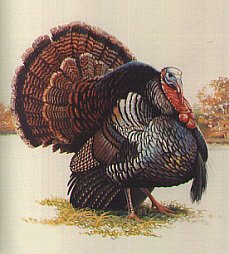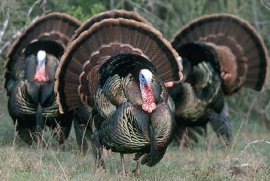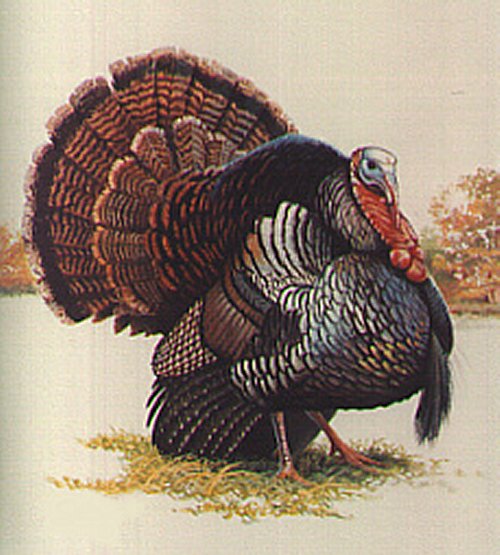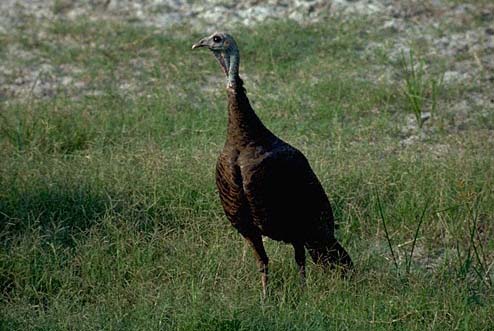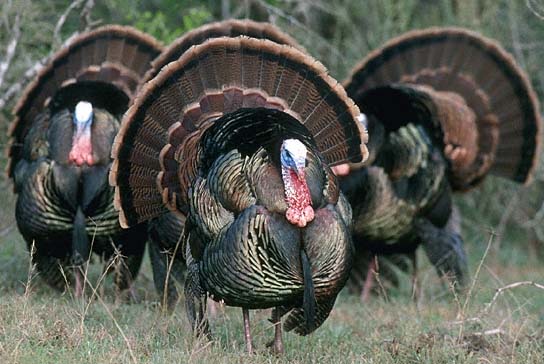Upland Ground Birds
Description
Male, 48" (1.2 m); female, 36" (91 cm). Unmistakable. Dusky brown, barred with black, with iridescent bronze sheen; head and neck naked, with bluish and reddish wattles; tail fan-shaped, with chestnut, buff, or white tail tips. Male has spurs and long "beard" on breast. Female smaller, lacks spurs and usually "beard." Domestic turkeys similar, but usually tamer and stockier.
Discussion
Although the Wild Turkey was well known to American Indians and widely used by them as food, certain tribes considered these birds stupid and cowardly and did not eat them for fear of acquiring these characteristics. By the end of the 19th century, the Wild Turkey had been hunted almost to extinction in much of its original range. Now, with protection, restocking programs, and the return of the mature forests favored by turkeys, this species is making a marked comeback. It is now common in areas where it was totally absent a few decades ago. Turkeys are swift runners and quite wary. They often roost over water because of the added protection that this location offers. They are polygamous, and the male gobbles and struts with tail fanned to attract and hold his harem.

